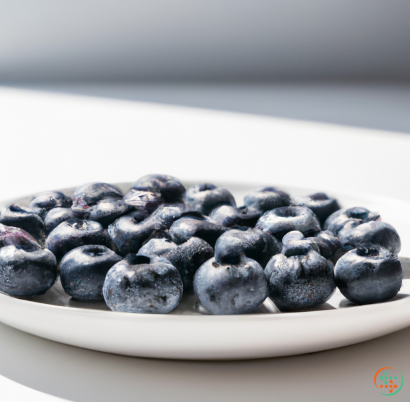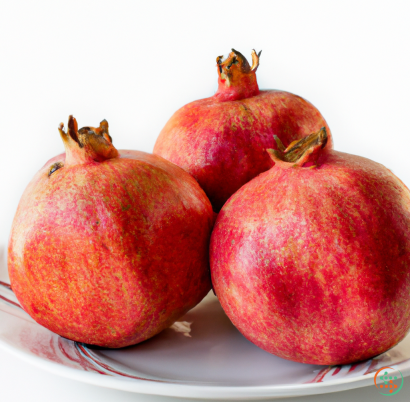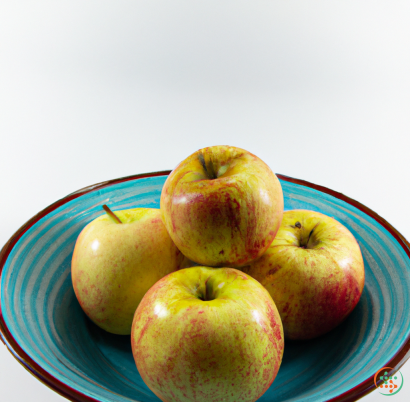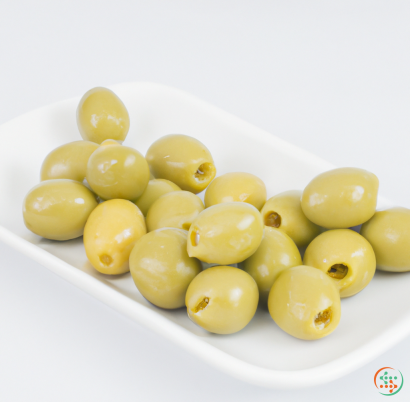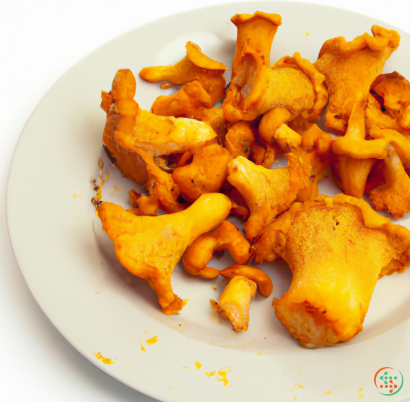Naranjilla
If you have ever heard of a naranjilla, you might have wondered what kind of fruit it is and where it comes from. The answer is that a naranjilla is a tropical fruit native to South America which has many similarities to the tomato in both its flavor and texture.
Naranjilla's name comes from the Spanish words for "orange" (naranja) and "little" (illa). This is fitting, since the fruit resembles an orange in size and shape, with a thin greenish-yellow skin that can range from slightly bumpy to heavily-wrinkled. Inside, its white flesh is soft, juicy and tart. The flavor of the naranjilla itself is delicate and slightly sweet, although its exact taste can depend on the variety.
Most people are familiar with the naranjilla through its juice, which is a popular drink in countries like Colombia, Ecuador and Peru. The juice is usually served cold and often has a range of added flavors like lime or tamarind. It is also a key ingredient in the traditional Andean cocktail known as "Ovomaltine" which consists of equal parts of naranjilla juice, lime juice, pineapple juice and banana liqueur.
Growing naranjillas is a fairly easy process as long as you remember to provide the plant with plenty of sunshine and water. The plant does best in an area that is moist and warm, with temperatures no lower than 15°C (59°F). While some varieties of the naranjilla can grow up to 2-3 metres tall, the standard type of naranjilla is low-growing and bush-like, so it's well-suited to being indoors in a pot or container.
Naranjilla plants usually start producing fruit around six months after planting, with the first harvest being ready to pick after 12 months. When the naranjilla is ripe and ready to eat, its outer skin should be soft to the touch and deep in color. Ripe naranjillas will keep in the refrigerator for between 10-14 days.
The naranjilla is an incredibly versatile fruit and can be used in many different ways. You can make tasty naranjilla jams and jellies, enjoy it with ice cream or turn it into a refreshing sorbet. It is also commonly used for making sauces that are normally served with fish, pork, beef and poultry. The juice can be added to smoothies and juices or used as the base for a delicious agua fresca (a Mexican beverage made from fruit juices, water and sugar).
In terms of health benefits, the naranjilla is packed full of nutrients and vitamins. It is high in vitamin C, calcium and iron and is a great source of antioxidants which can help improve your immune system. Furthermore, the naranjilla is low in fat and contains high amounts of dietary fiber, which can help reduce bad cholesterol levels and aid in digestion too.
Whether you choose to enjoy it as juice or enjoy it fresh and juicy, the naranjilla is definitely worth trying out. Its unique taste and texture make it incredibly versatile and versatile and it's incredibly easy to grow. So why not give this amazing South American fruit a try the next time you're at the store?
The Path of a Naranjilla from Its Birth to Your Dinner Plate
The journey of a naranjilla begins long before it arrives on your dinner plate. This native South American fruit requires plenty of time, energy, and resources to travel from its birthplace in Colombia, Ecuador, and Peru to grocery stores and restaurants around the world. In this article, we’ll break down the steps between a vibrant naranjilla’s creation in the Ecuadorian jungle to its delivery at your dinner table.
What Is a Naranjilla?
A naranjilla (also known as a lulo or naranjilla agria) is a roughly orange-sized and green-colored fruit that is native to the Northern Andes. It has become increasingly popular in recent years for its sweet and tart flavor and rich nutritional properties.
Naranjilla grows on tall bushy shrubs that can reach up to nine feet in height. When picked at peak ripeness, it has a bright yellow-green hue and a thin, wrinkled skin that covers a yellow jelly-like flesh. The unique taste makes it an ideal blend for sauces, smoothies, and other delicious dishes.
From Seed to Plant
Naranjilla is an exotic species that requires a very specific environment to grow. It is cultivated in tropical lowland and mid-elevation locations. The soils must be deep and rich in organic matter, and the temperature between 18 and 25 degrees Celsius. As the plants are often found in shady areas of the jungle, they fare better with sporadic showers than strong rains and dry spells.
When it comes to propagation, naranjilla flowers must be cross-pollinated if they are to produce healthy fruits. This means that a bee needs to carry pollen grains between two different shrubs, which can be in close proximity or up to a couple of kilometers away.
Once the flowers have been pollinated and the flowers turn yellow, the fruit will begin to swell and take on the characteristics of a naranjilla. At this point, it will appear as a round, pear-shaped object that is roughly 4 to 8 centimeters in diameter. The fruit can reach full ripeness between 90 and 120 days after the flowers open.
Harvesting and Packaging
When naranjilla fruits reach peak ripeness, they are picked by hand by experienced agricultural workers. Many of the fruits cannot be picked from the branches of the bush because they are not yet mature enough, so skilled harvesters must search the leaf litter and use their experience to spot the finest fruits.
The harvested fruits are then taken to the packing facility or cooperative that purchased them. Here, they are inspected and sorted by hand to ensure their quality and sort them by size and ripeness. The best fruits are packed in 4-kilogram or 5-kilogram bunches and wrapped in plastic before being loaded into crates or cartons.
Transporting Naranjilla Around the World
The next step of the journey takes place away from the farm. Naranjilla is transported in either refrigerated trucks or container ships depending on the destination. Container ships are much more efficient for long-distance travel and have the added benefit of avoiding negative temperature shocks during loading and unloading.
The crates of naranjilla are loaded onto the ships and travel hundreds of kilometers to the destination port, where they are unloaded and transported to retail stores. During this time, the fruit must be stored in a refrigerated space to avoid any spoilage.
From Grocery Store to Dinner Plate
Once the naranjilla arrives at the retail store, it is inspected one more time before being put on the shelves for customers to purchase. The fruits are normally sold in bunches of two, four, or six and should be handled with care because the fragile skin and pulp can be easily bruised.
At this point, the journey comes to an end and the naranjilla fruits are ready to be enjoyed. They can be used to make sauces, smoothies, cakes, jams, and more. When handling the fruits, it’s important to remove the green, hairy skin and yield only its sweet yellow jelly-like flesh.
Making the most of Naranjilla
Ultimately, the journey of a naranjilla from its creation in the Ecuadorian jungle to the dinner table varies from place to place. Despite this, those that appreciate the unique flavor and nutritional benefits of this modern-day superfood can rest assured knowing its process of growth, transportation, and handling has been closely monitored.
No matter how you choose to use the naranjilla, it’s sure to bring a unique and delicious flavor to your kitchen. So, the next time you’re looking for a healthy and tasty addition to your dinner plate, keep this information in mind and take a chance to add a newly arrived naranjilla to your grocery cart.
| Vitamin A | 0.028 mg | |
| Beta-Carotene | 0.333 mg | |
| Alpha-Carotene | 0.004 mg | |
| Vitamin E | 0.75 mg | |
| Vitamin K | 0.0146 mg | |
| Vitamin C | 0.0032 grams | |
| Vitamin B1 | 0.05 mg | |
| Vitamin B3 | 0.00145 grams | |
| Vitamin B5 | 0.22 mg | |
| Vitamin B6 | 0.11 mg | |
| Vitamin B9 | 0.003 mg |
| Calcium | 0.008 grams |
Daily Value 1.3 g
|
| Iron | 0.35 mg |
Daily Value 0.018 g
|
| Magnesium | 0.011 grams |
Daily Value 0.4 g
|
| Phosphorus | 0.012 grams |
Daily Value 1.25 g
|
| Potassium | 0.2 grams |
Daily Value 4.7 g
|
| Sodium | 0.004 grams |
Daily Value 2.3 g
|
| Zinc | 0.1 mg |
Daily Value 0.011 g
|
| Copper | 0.03 mg |
Daily Value 0.9 mg
|
| Manganese | 0.07 mg |
Daily Value 0.0023 g
|
| Selenium | 0.4 ug |
Daily Value 0.055 mg
|
| Glucose | 0.99 grams |
|
| Fructose | 1.04 grams |
|
| Sucrose | 1.72 grams |
|
| Total Sugars | 3.7 grams |
per 100g
|

